-
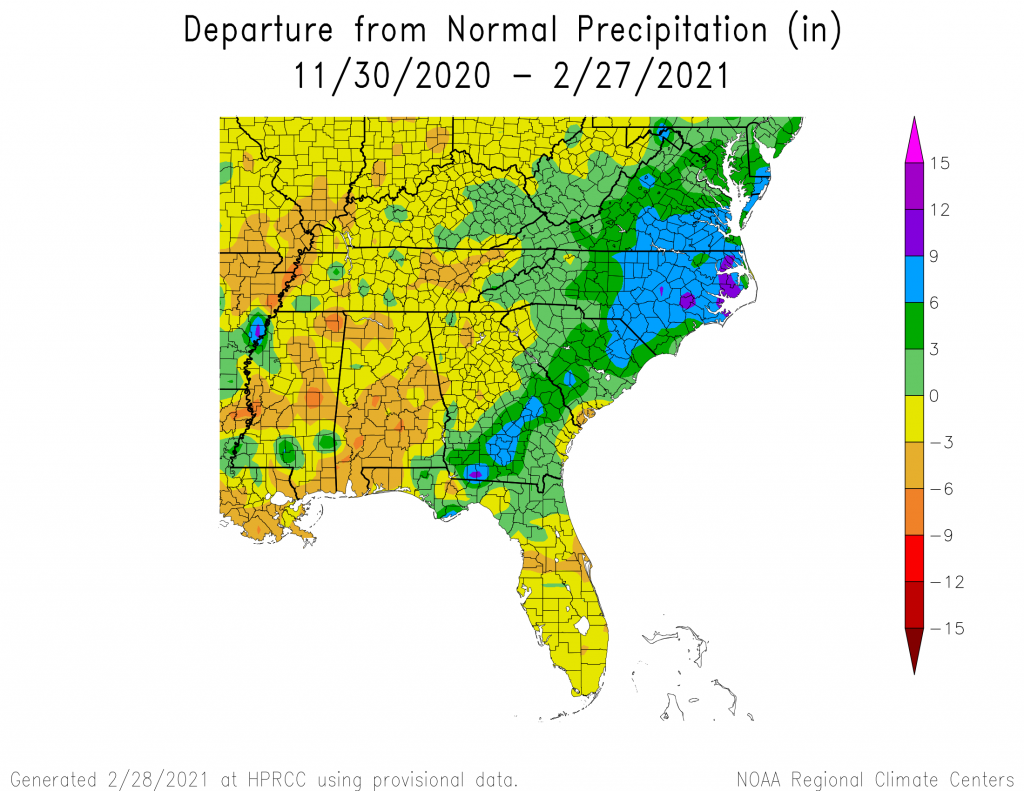
Today is the last day of meteorological winter, and in spite of being in a La Nina this year, it has not felt nearly as warm and dry as we usually expect from a LN winter due to the impacts of the Sudden Stratospheric Warming (SSW) which pushed the storm track south into our region,…
Posted in: Climate summaries -

More rounds of rain this week are expected in most areas of the Southeast except for the Florida Peninsula. The heaviest rain is expected to be in Alabama and western Georgia, with lighter amounts elsewhere. The Florida Peninsula should see only light amounts of rain, which could lead to the potential expansion of abnormally dry…
Posted in: Climate outlooks -
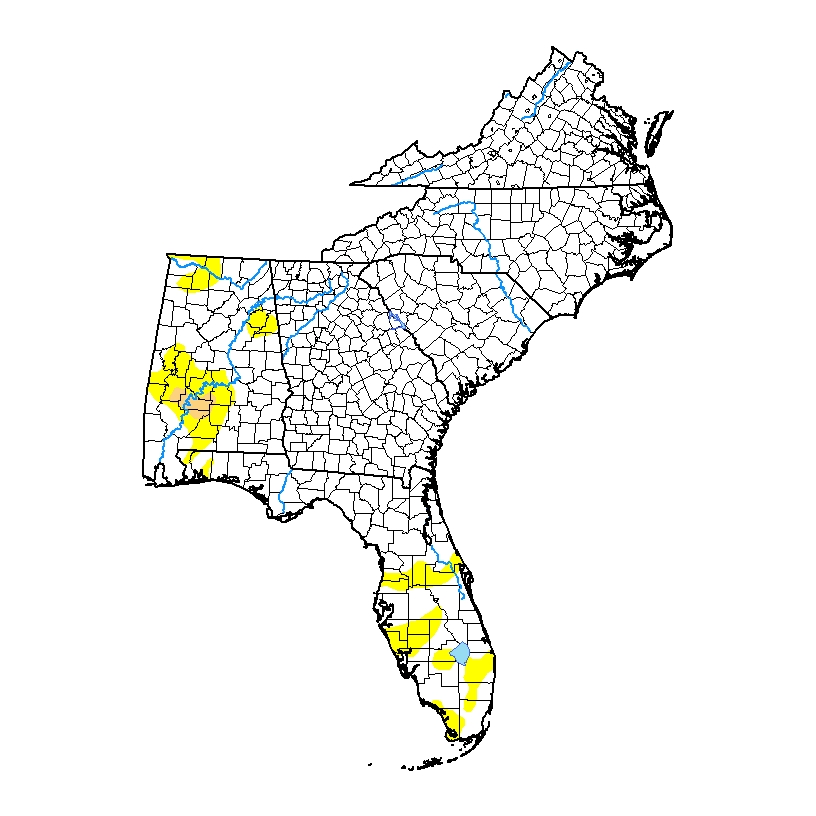
The latest Drought Monitor, released earlier this week, shows that the recent rains have removed the abnormally dry conditions (D0) that were western North Carolina and in Georgia and have reduced them in Florida. Moderate drought (D1) and abnormally dry conditions also shrunk in Alabama. With this week’s rain, I expect to see more decrease…
Posted in: Drought -
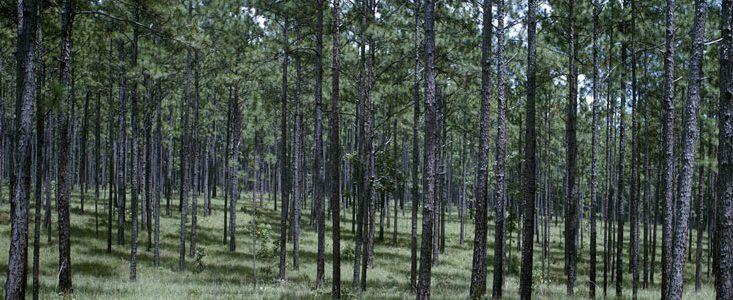
A lot of the Southeast is covered in forest now. In Georgia alone, about 70 percent of the land is now forested. Producers used to be able to make a good living off of forestry during the housing booms of previous decades, but now they are barely getting by. The Wall Street Journal has a…
-

I saw an article on Yahoo News about La Nina making tornado season more severe this year. And if you look at the overall tornado season for the country, that seems to be true. But previous research has shown that the area of the most tornadoes just shifts, so that areas west of us get…
-
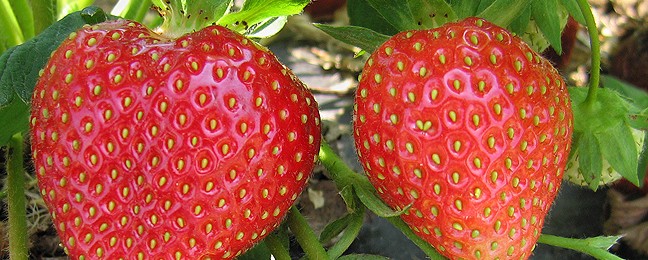
This week The Packer published a story about how weather was affecting strawberry production in Florida. Cooler weather has delayed the ripening of the berries, allowing them to grow bigger than usual. However, production issues in other areas reduced supplies for Valentine’s Day so the Florida strawberries were being eagerly awaited. You can read more…
-
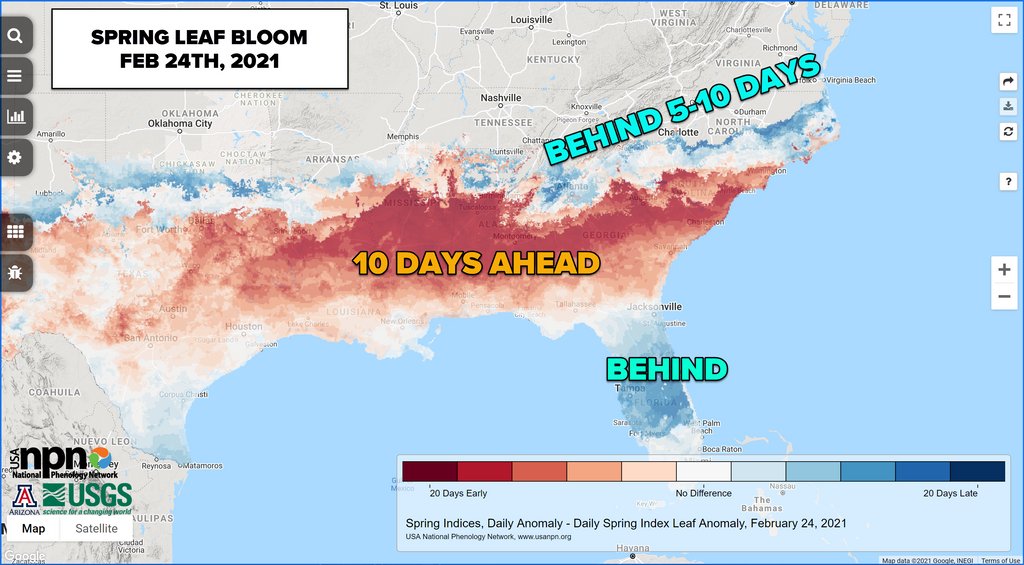
The National Phenology Network provides maps that trace the movement of the spring “green wave” north as the year progresses. Citizen scientists track events like the first green leaf, the first bloom on a plum tree, and other weather-related biological signs to see how they vary from one year to the next. This year’s map…
Posted in: Climate and Ag in the news